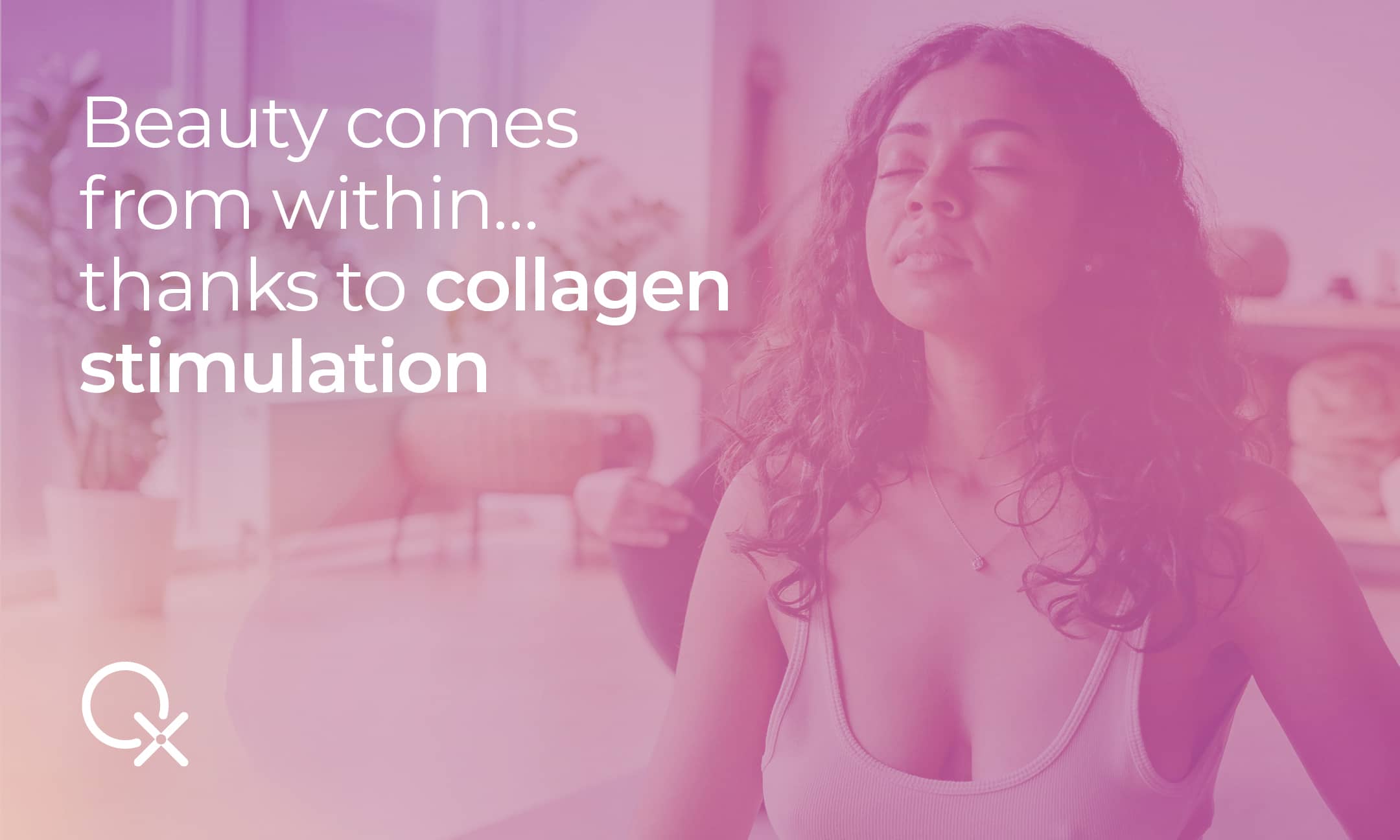Beauty comes from within… thanks to collagen stimulation
Collagen, a fundamental building block of our skin, is often associated with promises of turning back the clock on aging. However, understanding the true role of collagen stimulation is crucial to making informed choices about products and treatments.
What is collagen?
Collagen is the primary structural protein of connective tissues, providing the skin with strength and elasticity. Skin, tendons, organs, and bones all rely on different types of collagen for their structural integrity: a staggering 25% to 35% of the entire body’s protein content consists of collagen.
Several types of collagen exist. The three main ones are:
- Type I collagen: found in the skin, tendons, bones, ligaments, and cornea.
- Type II collagen: found in cartilage, the vitreous humor of the eyes, and intervertebral discs.
- Type III collagen: found in the skin, blood vessels, and internal organs.
The link between collagen and ageing
The natural aging process takes a toll on our skin. Around the age of 21, collagen production dwindles by approximately 1% each year. That causes the skin’s three layers – epidermis, dermis, and hypodermis – to become thinner. The skin loses firmness and elasticity, leading to common concerns like wrinkles and sagging.
The myth about collagen
The cosmetic industry likes to promote the so-called benefits of topical collagen products – which have to be applied to the skin – claiming that they are the best way to stimulate collagen production. However, this is a question of false advertising. Topically applied collagen, due to its large molecular size, fails to penetrate the skin’s top layer effectively. So, while it may provide superficial moisturization, it does not stimulate collagen growth.
Proven methods for collagen stimulation
Some of the best ways to stimulate collagen production include the following methods and tips.
- Vitamin C: while topical collagen has no rejuvenating effect, topical vitamin C, also known as L-ascorbic acid, is proven to have anti-aging effects by stimulating the production of collagen types I and III. Another effective way of boosting vitamin C levels is by including certain foods in your healthy diet, such as:
- broccoli
- spinach
- tomatoes
- bell peppers
- citrus fruits
- strawberries
- …
- Tretinoin: a potent synthetic derivative of vitamin A, tretinoin stimulates collagen production as well when topically applied, effectively improving the appearance of the skin.
- Chemical peels: controlled injury to the skin with acids results in accelerated exfoliation, stimulating collagen renewal, reducing wrinkles and improving the overall texture of the skin.
- Collagen supplements can also be effective in stimulating collagen production. They come in tablets, capsules, and powders. However, side effects can include diarrhea, skin rash, and stomach pain.
- Biofeedback is a non-invasive collagen stimulation method especially for boosting collagen in the face. Combined with natural creams, biofeedback has been proven to reduce wrinkles by 26% if moderate, and more severe facial lines by 20%.
Lasting beauty from the inside out
In other words, collagen isn’t just a superficial remedy for aging skin. It is a fundamental building stone of our health, skin included. The misleading allure of topical collagen products should be replaced with effective strategies for skin rejuvenation, which may differ from person to person. So, don’t hesitate to consult with a dermatologist to explore treatments for effective collagen stimulation which will promote lasting beauty from the inside out.






